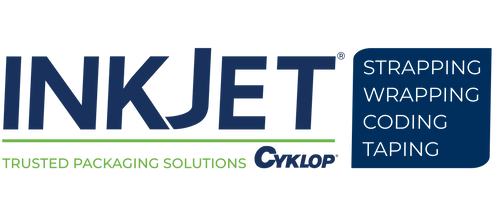Questions You Should Be Asking About Ingress Protection Rating
In today’s world of international supply chains and complicated distribution networks, unbroken traceability is an absolute must. From food packaging groups to pharmaceutical development companies, businesses across the industrial spectrum are frequently required by both supply chain partners and government officials to mark their products with traceable information such as lot codes, serial numbers, barcodes, and more.
With these markings, distributors can more effectively maintain accurate inventory, prevent counterfeiting, perform quality assurance tasks, and, in the event of product contamination or malfunction, perform product recalls.
It’s important to use a printer that is well-suited to your facility—especially if your production line is set in an environment plagued by dust and water presence. If you struggle with either of these damaging elements, it’s essential to use a printer with a high ingress protection rating.
High ingress protection ratings guarantee that a machine is protected against the harmful effects of airborne particles and water exposure. For many industries (e.g., beverage bottling and wire/cable extrusion), these protections can make the difference between a productive day on the job and a period of profit-draining downtime.
If you’re new to the world of ingress protected printing hardware and are unsure of what protections you require, here are some questions to consider:
1. Do You Package Liquid Products or Use Liquid During the Manufacturing Process?
If you’ve ever canned or bottled products before, you’ve likely seen the amount of humidity that can be produced from the process. Whether you’re packaging beer, paint, chemicals, or another liquid, you need to be well prepared for the possibility that your working conditions can quickly turn from dry to damp. Likewise, operations that use liquid in any form during the manufacturing process should also be prepared for the possibility of excess humidity.
To avoid printer damage and the downtime that comes with it, packaging companies that work with liquid should look into printers that come with a liquid IP rating of at least IPX5. This level of protection defends the printer against low-pressure jets of water at all angles and directions as well as protection against humidity ingress.
|
|
2. Does Your Manufacturing Process Produce Physical Particles of Any Kind?
Just like humidity and water exposure, dust and other airborne particles have the potential to damage printers and disrupt the marking process. While industries like lumber production and wire/cable extrusion obviously produce a substantial amount of airborne particles during production, dust problems plague industries of all backgrounds as well, including food packaging, chemical production, and electrical component manufacturing.
If you ever see dust produced in your facility, avoid downtime by using a printer with a solid particle IP rating of IP6. IP6 ratings guarantee that the machine is 100% protected from particle ingress of any kind.
3. Does Your Facility Routinely Experience Temperature Swings?
Substantial temperature swings are commonly associated with a number of industries, including meatpacking, chemical processing, and construction material production. With dramatic temperature swings come a variety of issues that can affect printer effectiveness, including:
- Excessive humidity
- Condensation
- Changes in ink viscosity
While high IP ratings can protect printers from humidity, factors like surface condensation and changes in ink viscosity require more than just ingress protections. To accommodate them, line operators need to use printers that are capable of automatically recalibrating ink viscosity to accommodate a temperature change.
Further, it’s essential to use an ink formula that is designed to work well within a facility’s temperature range. To avoid complications, make sure to consult a printing expert before investing in a printer or ink formula.
4. What Cleaning Products Do You Use?
Routine cleaning procedures help ensure that workers are kept safe and prolong periods of productivity. However, some cleaning products can corrode low grade stainless steel, even when they aren’t directly applied to a printer’s surface. Common examples include:
- Cutting oils
- Solvent
- Caustic washes
For instance, chemical particles can travel through the air and enter through the cabinet and get stuck in the gutter. Although high IP ratings mitigate this risk, it’s still important to ask an expert about the risks posed by your cleaning materials.
Have Your Own Questions About Ingress Protection Ratings? InkJet, Inc. Has the Answers
From excessive dust to extreme humidity, industrial coding lines are home to some incredibly challenging environmental conditions. Fortunately, many of today’s printers are specifically built to resist these problems and ensure long periods of uninterrupted uptime.
If you’re looking for a new printer that can stand up to the unique challenges posed by your work facility, call InkJet, Inc. today to find a solution that works for you.
To learn more about ingress protection ratings, contact us online today or call 1(800) 280-3245.



